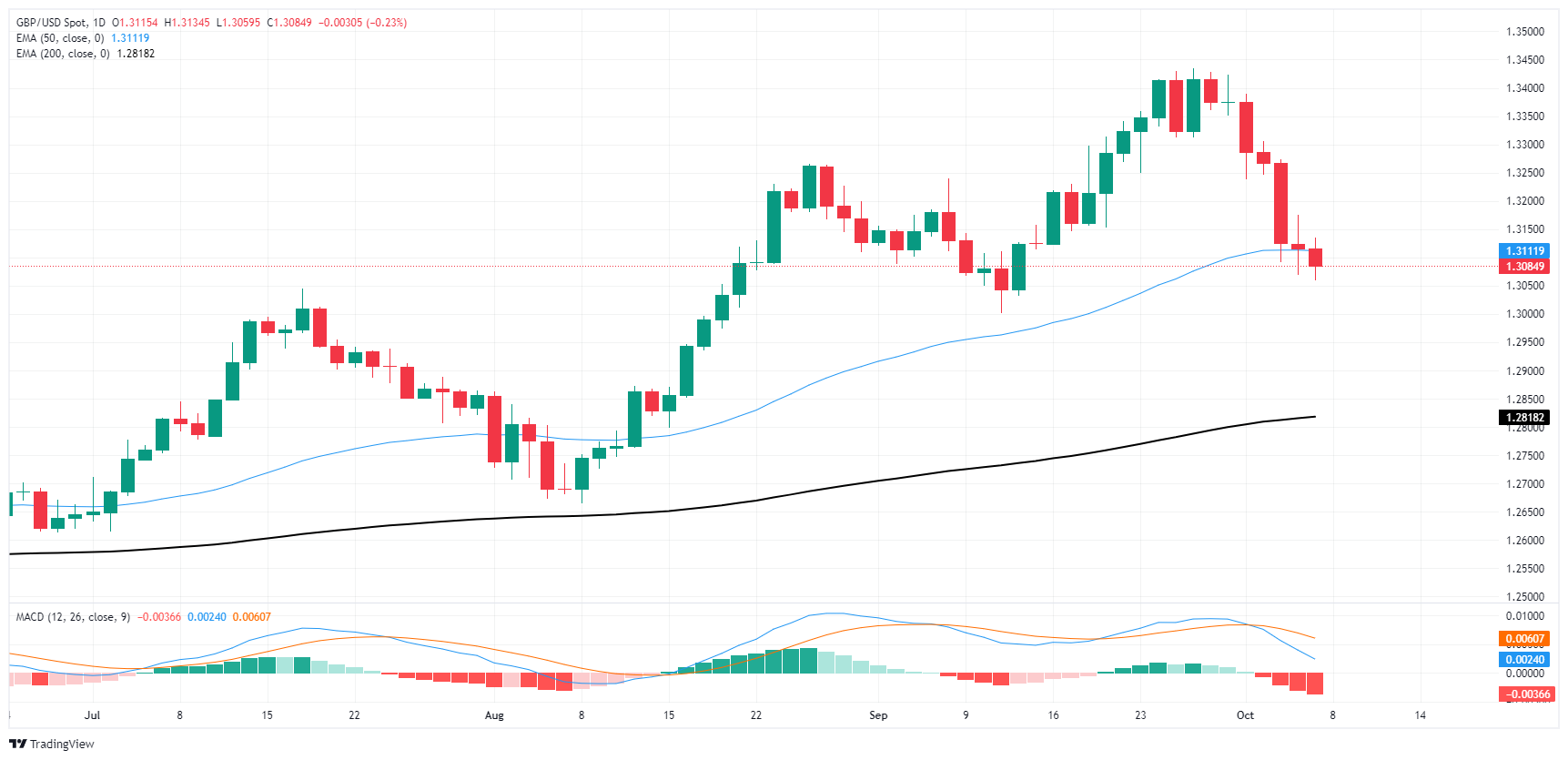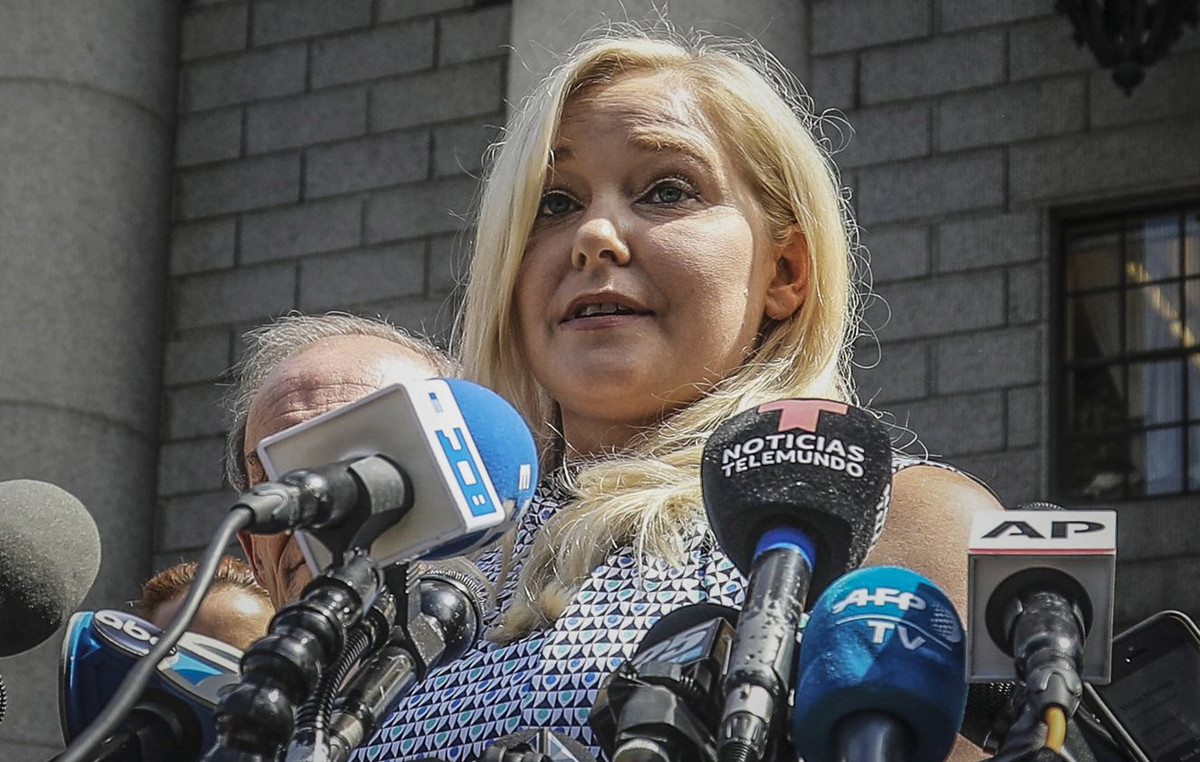- GBP/USD loses another 0.25% on Monday as markets tilt towards risk aversion.
- Hopes for rate cuts continue to evaporate, and lack of UK data keeps Cable stuck.
- FOMC meeting minutes, US CPI inflation and UK GDP set this week’s economic outlook.
GBP/USD fell another quarter of a percentage point on Monday, hitting a new four-week low and closing below the 1.3100 area for the first time since mid-September. Investors’ rate cut hopes are crumbling under the weight of a firmer-than-expected U.S. labor market, and geopolitical tensions have kept traders’ risk appetite stagnant.
Investor appetite waned heading into the new trading week, as market hopes for further significant rate cuts continue to wane. Rate markets now overwhelmingly expect the Fed’s next rate move on Nov. 7 to be a modest quarter-point cut, rather than the 50 basis points rate markets were expecting just after the first double rate cut. 50 basis points from the Fed in September. The Fed’s speeches have telegraphically informed markets that further deterioration in the US economy, and specifically the US labor market, will be what opens the door to additional extreme moves in rates.
Last week’s robust Nonfarm Payrolls (NFP) eliminated almost all hopes of a double rate cut in November, to the point that rate traders see a one in five chance of no rate cut in absolute on November 7, according to the CME’s FedWatch tool.
Data remains limited on the UK side, with GBP traders forced to wait until the UK Gross Domestic Product (GDP) release on Friday. Meanwhile, Dollar speculators will be keeping an eye on the US Consumer Price Index (CPI) inflation figures due out on Thursday.
GBP/USD Price Forecast
The Cable has closed in red for the fifth consecutive day as offers driven by fear of the Dollar continue to increase. The pair has fallen back below the 50-day EMA, and GBP/USD daily candlesticks have closed below 1.3100 for the first time since mid-September. Despite hitting multi-year highs last month, Cable is still down 2.8% from its peak to its trough.
GBP/USD Daily Chart
The British Pound FAQs
The British Pound (GBP) is the oldest currency in the world (886 AD) and the official currency of the United Kingdom. It is the fourth most traded currency unit in the world, with 12% of all transactions and an average of $630 billion per day, according to 2022 data.
Its key currency pairs are GBP/USD, also known as “Cable”, which represents 11% of the forex market, GBP/JPY, or the “Dragon” as it is known to traders (3%), and EUR/GBP (2%). The pound sterling is issued by the Bank of England (BoE).
The most important factor influencing the value of the Pound Sterling is the monetary policy decided by the Bank of England. The Bank of England bases its decisions on achieving its main objective of “price stability”, that is, a stable inflation rate of around 2%. Its main tool to achieve this is the adjustment of interest rates.
When inflation is too high, the Bank of England tries to contain it by raising interest rates, which makes access to credit more expensive for individuals and companies. This tends to be positive for the GBP, as higher interest rates make the UK a more attractive place for global investors to park their money.
When inflation is too low, it is a sign that economic growth is slowing. In this scenario, the BoE will consider lowering interest rates to make credit cheaper, so that companies borrow more to invest in projects that generate growth.
The published data gauges the health of the economy and may influence the value of the Pound sterling. Indicators such as GDP, manufacturing and services PMIs, and employment can influence the direction of the Pound.
A strong economy is good for the British pound. Not only does it attract more foreign investment, but it may encourage the Bank of England to raise interest rates, which will directly strengthen the Pound. Otherwise, if economic data is weak, the pound is likely to fall.
Another significant data for the pound sterling is the trade balance. This indicator measures the difference between what a country earns from its exports and what it spends on imports during a given period.
If a country produces highly sought-after exports, its currency will benefit exclusively from the additional demand created by foreign buyers wishing to purchase these goods. Therefore, a positive net trade balance strengthens a currency and vice versa for a negative balance.
Source: Fx Street
I am Joshua Winder, a senior-level journalist and editor at World Stock Market. I specialize in covering news related to the stock market and economic trends. With more than 8 years of experience in this field, I have become an expert in financial reporting.







